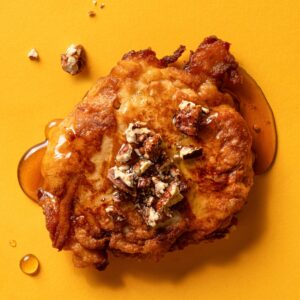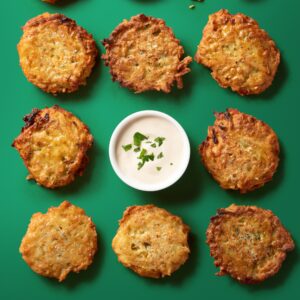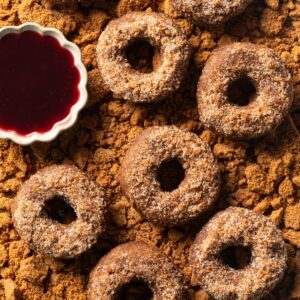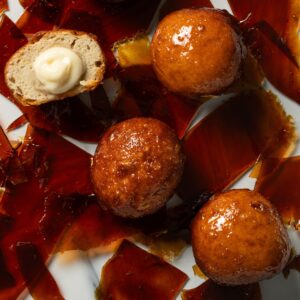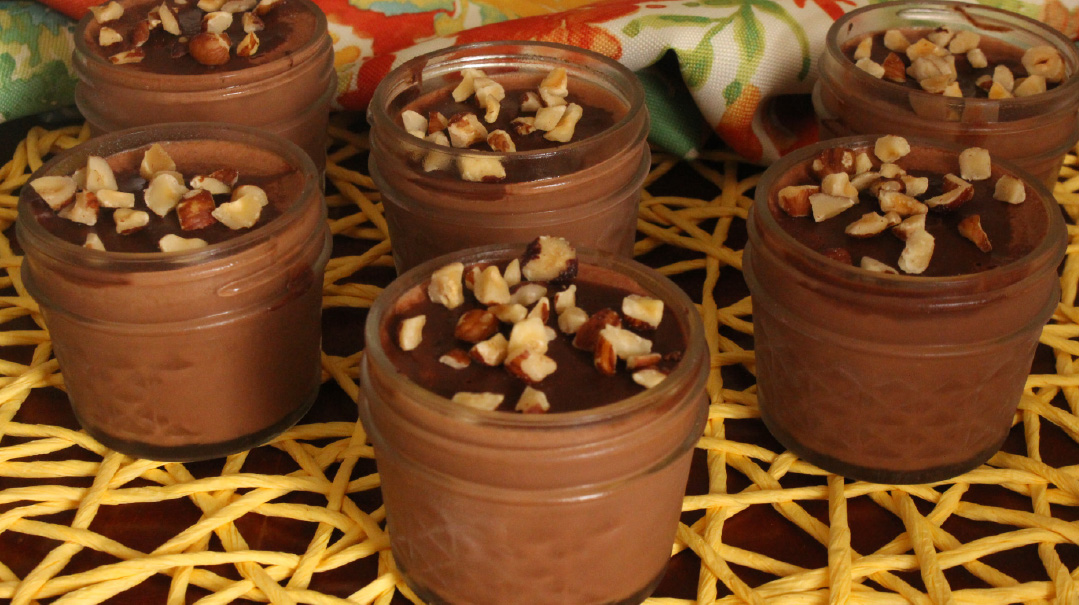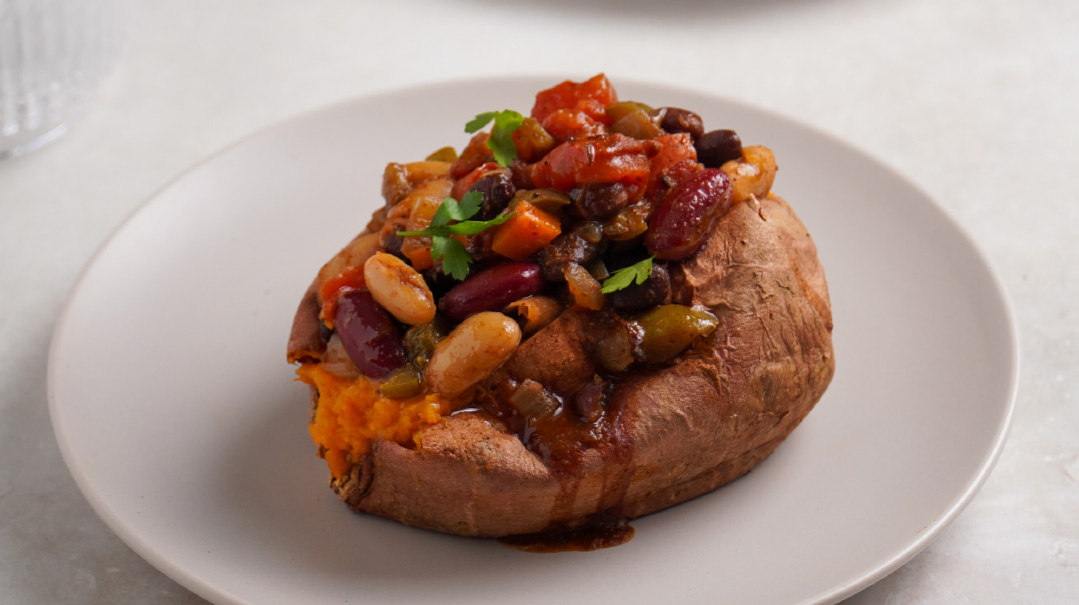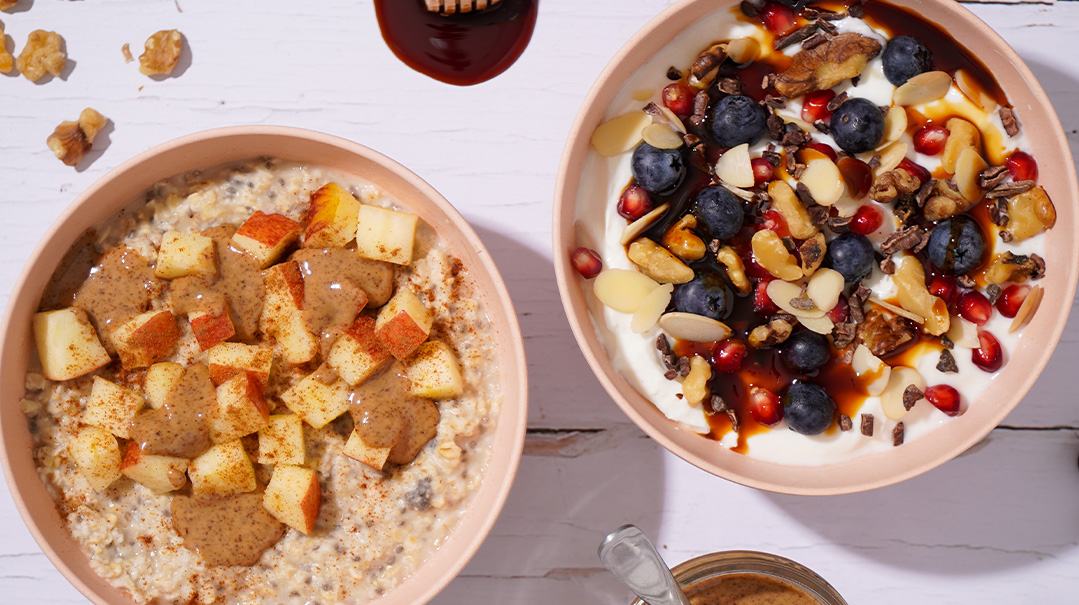The News about Cues

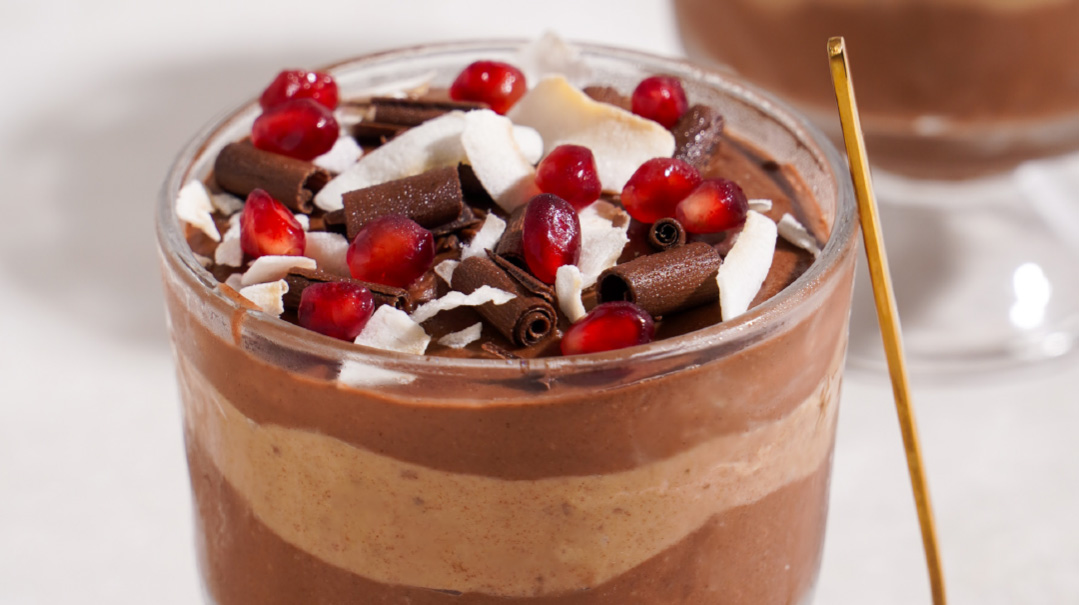
Styling and photography by Sara Goldstein
Before Pesach, we talked about the three parts to elevated Yom Tov eating: taking pleasure in nourishing not only our body, but our soul; pausing to assess our fullness levels before continuing; and pacing ourselves through the different courses so we don’t overshoot comfortable satiation.
While Pesach is often associated with simplicity, Shavuos is more indulgent. Chances are that the “pleasure” piece is more than taken care of. What’s left are the challenges of pausing and pacing.
The Pacing Challenge
Women often ask me, “Why is it so hard for me to pace myself at Yom Tov meals? I take the time to pause, but I still find myself feeling uncomfortably full when the meal is over.”
The answer: It could be that there’s something a little more scientific at play. While pausing allows us to tune in to our body’s cues for hunger and fullness, our body’s cues are strongly influenced by the kind of foods we eat. We think of all food as a way to fill up, but ironically, certain foods can make us feel hungrier.
Hungry Food
Suppose you’re running late to work and leave your lunch at home. At midday, you find a cake platter in the staff room and help yourself to a few slices. Doesn’t hold you over that long, does it? That’s because hormones in your body will respond to the cake’s heavy sugar content by (a) not registering fullness, and (b) craving even more sugar.
On the other hand, the lunch you left in your fridge — hard-boiled eggs, baby carrots, hummus, and leftover quinoa from last night’s supper — does have holding power. That’s because different foods give our bodies different instructions. Thanks to the combination of protein, fiber, healthy fats, and complex carbs, that well-balanced meal will do something that cake and other processed starches can’t: activate the hormones that quiet your hunger cues and tell your brain you’re full.
Ahead of the Cues
When we pause during our Yom Tov meal, we need our hunger and fullness cues to serve us accurately so we can make informed decisions. How can we set ourselves up for success?
Salad Starter:
One of the best ways to trigger our fullness hormones at the start of the meal is with a salad appetizer, ideally with a protein (chicken, meat, fish, or feta or goat cheese) included. The low-sugar, high-fiber macronutrient profile, along with the protein topper and healthy-fat-based dressing, activates the hormones responsible for the fullness cue and keeps our blood sugar nice and even, preempting cravings. (Side note: salad also takes a while to chew and swallow, which helps our brains catch up with our stomachs!)
Bounce Back:
If you do start your meal with a starch-based appetizer — or a piece of cheesecake! — be aware that your body will be cuing you for more sugar. For example, you might find yourself naturally reaching for the challah and kugel over the salmon and veggies. The good news is that consciously choosing protein and fiber-rich foods can help you reset to a certain extent by curbing the imminent blood sugar crash.
Smarter Sweets:
Even once you’re full, sugary desserts can rev up your post-meal sugar cravings. I remember how one Shavuos, my brother-in-law, a major cheesecake fan, opted for my better-for-you cheesecake at the end of a meal instead of the store-bought one I’d gotten for him, and he was amazed at how different he felt. Yom Tov is a great time for treats, but if you’re curious about how you might feel with different input, you can experiment with dessert options made with unrefined ingredients, healthy fats, and sometimes even protein and fiber, like these decadent fudge cups.
With a Yom Tov full of delicious food ahead, understanding how the food we eat affects our body’s cues can help us plan and eat smarter so we can go through Yom Tov feeling better than ever.
Here’s to a beautiful Shavuos!
Rorie Recommends: Gefen’s Blanched Almond Butter
One of my favorite recent discoveries in the world of baking! Blanched almond butter isn’t just the creamiest, lightest-colored, and mildest-tasting nut butter I’ve ever tasted, but using it in baking over typical almond or cashew butter produces baked goods that look so white and don’t have even the slightest nutty taste. I’ve started using it in everything from my famous banana-nut muffins to these fudge cups and lots more in between.
Decadent Fudge Cups
Full of healthy fats and protein and sweetened with fibrous whole dates, this decadent, real-deal-feel dessert is richly satisfying without causing a blood sugar spike and crash. For a Shavuos afternoon treat, prepare them in plastic cups, add a popsicle stick, freeze for at least six hours, and pop them out when you’re ready.
SERVES 8
Light Layer
- ¾ cup canned coconut milk or any vegan milk
- ¼ cup blanched almond butter or creamy cashew butter
- 4 large Medjool dates, pitted
- ½ tsp pure vanilla extract
Fudge Layer
- 1¼ cups canned coconut milk or any vegan milk
- ½ cup blanched almond or creamy cashew butter
- 8 large Medjool dates, pitted
- ¼ cup cocoa
- 1 tsp pure vanilla extract
Toppings (optional)
- shaved dark chocolate, coconut flakes, pomegranate seeds
Set out 8 4-oz (110-g) dessert cups. For popsicles, use plastic drinking cups.
To prepare the light layer, process milk, nut butter, pitted dates, and vanilla in a blender or food processor fitted with the S-blade to form a paste, scraping down the sides as needed. Transfer mixture to a bowl.
To prepare the fudge layer, place all ingredients into the blender or food processor. Process to form a paste.
To assemble, fill each cup 1⁄3 of the way full with the fudge mixture. Add the light mixture to reach 2⁄3 of the way full, followed by another layer of the fudge mixture. Top with shaved dark chocolate, coconut flakes, pomegranate seeds, or toppings of choice.
Freeze for 6 hours or overnight. Thaw for 15–30 minutes before serving.
(Originally featured in Family Table, Issue 896)
Oops! We could not locate your form.

